#Czechoslovakian cinema
Text
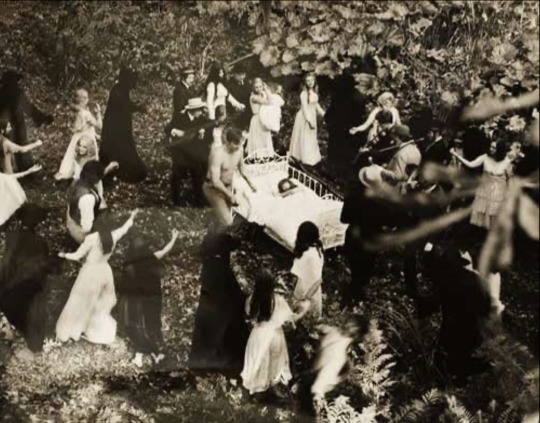
Valerie & Her Week of Wonders (1970) Dir. Jaromil Jireš
#valerie & her week of wonders#1970#1970s#adaptation#jaromil jireš#Czechoslovakian cinema#horror#retrospective#foreign language film#cinematic still#film still#stills
47 notes
·
View notes
Photo




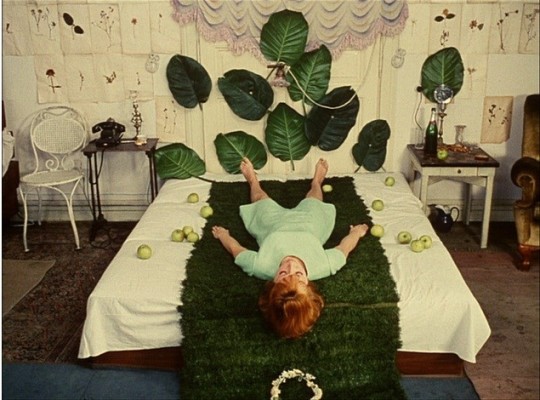
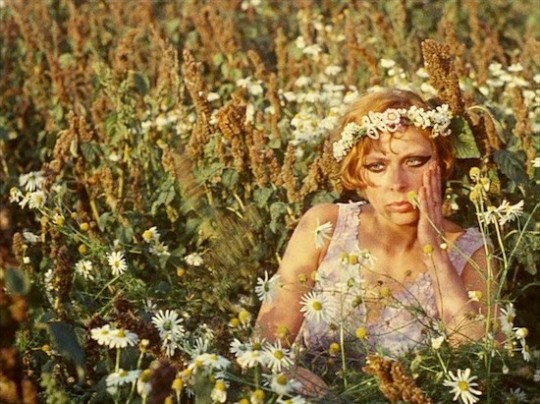


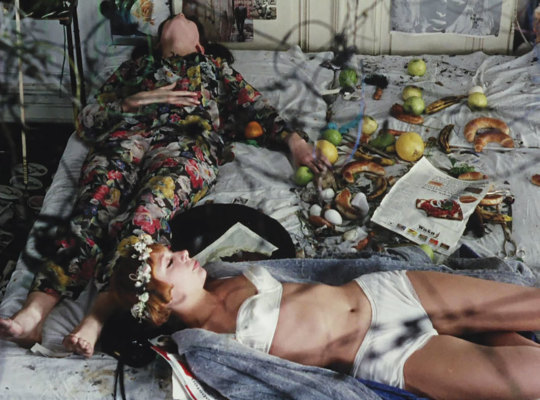
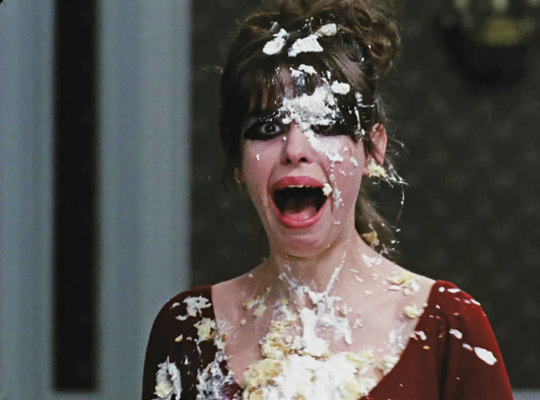
SUBLIME CINEMA #638 - DAISIES
Vera Chytilová was a prolific and underrated Czech director who specialized in avant-garde, sociopolitically charged comedies, which sometimes got her into trouble with government censors. ‘Daisies’ was initially banned by the Czechoslovak government due to its depictions and imagery of wasting food (of all things) and then went on to be very well received elsewhere, which always ends up the case.
#cinema#film#movie#movies#classic film#DAISIES#Vera Chytilová#czech film#cinema of czechloslovakia#Czechoslovakian cinema#czech cinema#feminist film#feminism#comedy#slapstick#60s#1960s#60s filim#mod#surreal#surrealism#avant garde#experimental film#eastern europe#Eastern European cinema#60s cinema#european cinema#eu cinema#czech republic#entertainment
202 notes
·
View notes
Text
youtube
Watch the American Climate Leadership Awards 2024 now: https://youtu.be/bWiW4Rp8vF0?feature=shared
The American Climate Leadership Awards 2024 broadcast recording is now available on ecoAmerica's YouTube channel for viewers to be inspired by active climate leaders. Watch to find out which finalist received the $50,000 grand prize! Hosted by Vanessa Hauc and featuring Bill McKibben and Katharine Hayhoe!
#ACLA24#ACLA24Leaders#youtube#youtube video#climate leaders#climate solutions#climate action#climate and environment#climate#climate change#climate and health#climate blog#climate justice#climate news#weather and climate#environmental news#environment#environmental awareness#environment and health#environmental#environmental issues#environmental justice#environment protection#environmental health#Youtube
6K notes
·
View notes
Text

youtube
#movie#film#cinema#Czechoslovakian cinema#Czech cinema#Czechoslovakia film#Czechoslovakia movie#Czech film#surrealist film#fantasy film#horror film#Czech new wave#Jaromil Jireš#Vítězslav Nezval#Youtube
5 notes
·
View notes
Text
#girlie#daisies#daisies 1966#sedmikrasky#sedmikrasky1966#litterally me#this is a girlblog#just girly thoughts#just girly things#girlhood#jitka cerhova#ivana karbanova#marie 1#marie 2#czech republic#slovakia#czechoslovakia#czechoslovak cinema#czechoslovakian#annoyingprincedreamer
67 notes
·
View notes
Text
read embassy as em-bussy am i going to hell
#gay little research paper#doing a project czechoslovakian new wave cinema#reading about czechoslovakian politics#having a time
1 note
·
View note
Text
.
#cant find the post that was like what are YOU pretentious about like name their 3 albums pretentious#anyway i thought about it for a bit and unfortunately its cinema.#im slightly annoyed by people who claim theyre into cinema but only watch premieres and oscars are the most important award to them...#like “name 3 directors representong czechoslovakian new wave“ annoyed#im sorryyyy i know its a flaw of mine i just greatly care about all this....
1 note
·
View note
Note
have you ever watched the popelku (cinderella ish) film?? it's a winter classic here in germany and in the czech republic but i'm wondering if it's popular in slovakia too? since it was a collaboration between ddr and czechoslovakia back in the day but it's only in german and czech (i think) so idk how people in slovakia feel about it
Oh my goodness. One thing people need to know is Czechoslovakian film did not fuck around!!! The costumes and sets are all incredible. Popelku is probably one of the most popular - if not the most. It's a lovely cinderella retelling. The title can be translated to three wishes for cinderella or three nuts for cinderella lmao


We tend to watch a dubbed Russian one which is hilarious (Morozko - Russian, Mrazík - Czech) about father frost, a cinderella type girl, a selfish man who's turned into a bear and baba yaga. It's a mix of different fairytales.
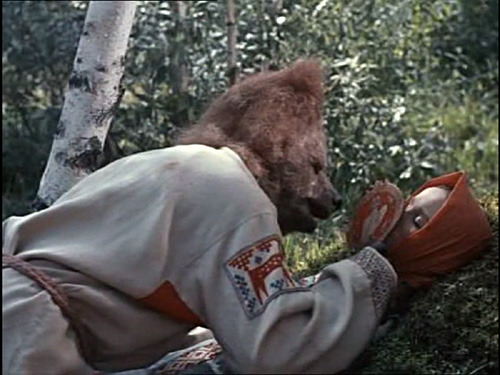


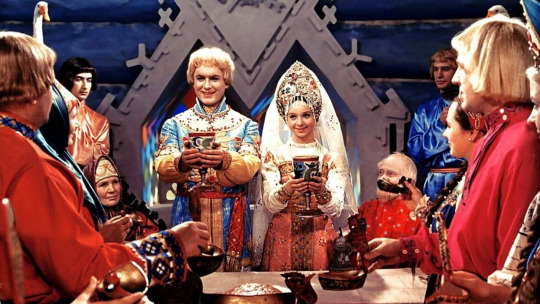
Under here I'll put more Czechoslovak films that i love
Give the devil his due (s čerty nejsou žerty) - a demon takes the wrong person to hell, a magical wolf's tail and 3 wishes. This one is super popular too.

The Girl on the broomstick (Dívka na koštěti) - facing 300 years detention, a witch escapes to the human world

Cosy dens (pelísky) - about a block of flats during russian occupation at christmas-time and subsequent prague spring of 1968. This is a really good insight to communism in czechoslovakia - you could only have the boots that were allowed. The son has new boots from usa (i think) and haircut like the beatles. a girl argues with her dad because she says the food is like italian gnocci rather than czech dumplings. It's very good!

PelísI
I enjoy the world with you (S tebou mě baví svět) - a group of dads take their kids to a cabin in winter for skiing etc and just total carnage because they're in charge (it's so funny)
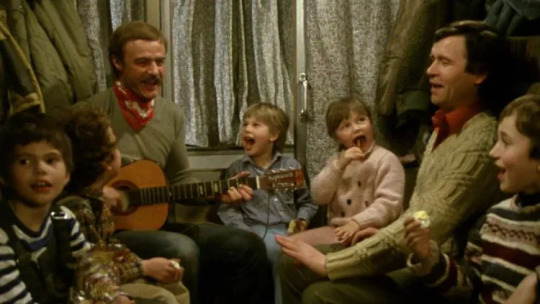
The insanely sad princess - (Šílene smutná princezna) - both want true love but are being put into an arranged marriage

The princess with the golden star (Princezna se zlatou hvězdou) - fleeing an evil king (and future husband) into the arms of a handsome man and also has a golden star on her forehead

and one of my favourites is called vodník in slovak according to my partner but i literally cannot find it anywhere?? It's about people who live in an underwater world and can move on the land as a vodnik in folklore is like a water creature.
anyway old czechoslovakian movies were real cinema
19 notes
·
View notes
Text
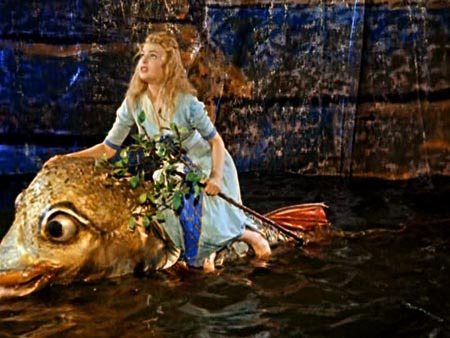
This still is from 'The Singing Ringing Tree' which was made in East Germany in 1957 and, as I remember it, broadcast by the BBC as a series for children in the 1970s. I found the fairy tale of a spoilt princess who was turned into an ugly wench until she redeemed herself, the prince who morphed into a bear after being tricked by the evil dwarf, and the weird golden fish swimming about in the moat, absolutely riveting. I watched it at my Grandma's house in Bradford, which made the experience even more special and memorable. In the 1990s, I went to see 'The Singing Ring Tree' as a full length film at the cinema in Brixton and I now own it on DVD. Of course, watching it as an adult is completely different. The special effects and stage set are crap, but a child's imagination doesn't need fancy special effects. To my young eyes, this programme was magical.
Another favourite was 'Three Wishes for Cinderella' or 'Three Little Nuts for Cinderella' (original title: 'Tři oříšky pro Popelku'). It was a Czechoslovakian-East German film made in 1973, and if I remember rightly, it was serialised into weekly episodes and broadcast in the late 1970s by the BBC around teatime. The main character was really pretty; she was boyish as a peasant girl, and beautiful as a princess. She discovered a tree house which had an owl inside and some magical acorns which, when she cracked them open, contained a beautiful dress that she could go to balls in and meet her handsome prince. She rode a horse and she could use a bow and arrow, there were snowy landscapes and the overall effect was mesmerising.
I was fortunate to watch a lot of good quality telly when I was a child which instilled in me a sense of magic and wonder. I don't have kids of my own (thank goodness!), but if I did I would make sure they watched loads of children's TV that I watched when I was a child.

0 notes
Text

The Czech New Wave, which emerged in the 1960s, was a cultural and cinematic movement that broke away from the social realism of Czechoslovakia's communist government. The Czech New Wave had a significant impact on both Czechoslovakian and international cinema, inspiring filmmakers around the world to challenge traditional filmmaking techniques. These films often times contained unique film aspects such as strange humor, and uniquely structured plots. The Czech New Wave was also notable for its portrayal of Czechoslovakia's political and social climate, which was heavily influenced by the country's communist government. Many films from this era addressed themes of isolation and disillusionment. For example, Jiri Menzel's "Closely Watched Trains" follows a young man working at a train station during World War II who becomes disillusioned with the lack of action in his life. The film serves as a commentary of individuals in the face of larger political forces. These films also tackled themes that were unheard of back in the 60s or were notorious for being touchy topics such as non-professional actors and sexual themes. Czech New Wave directors often cast amateurs in their films, which gave the performances a sense of authenticity and naturalism and could be more relatable to any audience watching at home or in theatres. This approach also allowed the directors to explore more complex and subtle emotional themes in their films. Despite its critical success, the Czech New Wave was short-lived. In 1968, Soviet forces invaded Czechoslovakia, putting an end to the brief period of artistic freedom. Many filmmakers were forced into exile, while others were banned from making films altogether. However, the influence of the Czech New Wave continued to be felt in the world of cinema, with filmmakers such as Quentin Tarantino and Wes Anderson citing the movement as a major inspiration. This era of film making was mostly experimental for many popular and well-known directors who had previously pushed out incredible films. They had a reputation to uphold which makes this film genre very controversial. Audiences criticized the films produced during this era, but shockingly enough, it had gotten almost more positive backlash rather than negative. Not only did this film making style impact Czechoslovakia, but it also impacted the U.S. One of the most notable impacts of the Czech New Wave on the US was the influence it had on the development of the American New Wave. Filmmakers such as George Lucas were inspired by the innovative techniques and narrative styles of the Czech New Wave directors and incorporated these elements into their own work. The use of physical handheld cameras, jump cuts, and out of order storytelling, which were hallmarks of the Czech New Wave, became popular techniques in American cinema. Films that fall within this category may be black and white, or color, and are often characterized by a degree of film conventions, as well as the influence of art cinema. Another hallmark of Czech New Wave film production was the use of unconventional narrative structures. These films often used flashbacks, dreams, and other techniques to create a more abstract narrative which confused watchers, but also intrigued them making them question what they are seeing and keep watching. This allowed the filmmakers to explore themes of memory and different perceptions. Overall, the Czech New Wave had a significant impact on the US film industry and culture, inspiring a generation of American filmmakers and introducing audiences to new forms of cinema and storytelling.
1 note
·
View note
Photo

🍿 The 954 Movies I saw in 2022 🍿
This is the second year since I started writing short reviews of the many films that I watch every day. A year ago I summarized my experience of seeing 885 movies in 2021. And here's the encore for 2022. (All links at the bottom of this post).
Watching nearly 3 movies a day for 2 years is not exactly 'normal', and neither am I. However, I'm a life-long cinephile who finally have the chance to do whatever the heck I want, and that's what I decided to do. I love discovering new works of art, as well as re-living forgotten memories of the past. It also got me back into the habit of writing every day, even if it's only short observations that go into my proverbial drawer.
Most important is the joy that the process gives me, so unless my circumstances change, I plan on continuing with this “Project” for the foreseeable third year.
Below are some statistics and a few of my best finds of 2022:
Of the 954 films that I saw, 121 (12%) were films I had seen before (often repeatably), and 833 were 'New to me.' 74 of them (8%) were documentaries, 74 were short films, 7 were stand-ups and 9 were 'so bad that I couldn't finish them'.
This year I wanted to explore even more of “World” Cinema, so I saw a total of 460 “Foreign” films. They were broken into: French (76), British (71), Japanese (47), Korean (23), Swedish (22), Danish and Italian (21 each), Canadian (15), German (13), from Hong Kong (11), Russian (10), from Finland and Argentina (9 each), Iranian (8), Turkish and Czechoslovakian (7 each), Australian, Indian, Irish and Norwegian (6 each), from Iceland, Israel, Mexico (5 each), Austrian, Belgian, Spanish and Kiwi (4 each). Also multiple films from Afghanistan, Algeria, Azerbaijan, Bhutan, Bolivia, Brazil, Chile, China, Colombia, Congo, Cuba, Egypt, Greece, Holland, Hungary, Indonesia, Lebanon, Macedonia, Nigeria, Palestine, Peru, Poland, Portugal, Romania, Scotland, South Africa, Switzerland, Taiwan, Thailand, Tunisia, Ukraine and Wales. Many of the movies I enjoyed the most came from these countries.
As far as their age, there were only 32 silent films (before 1930), Only 77 'talkies' from 1930-1960, and 572 newer ones, from 2000 to today.
Of the individual directors, here are the ones I saw the most films of:
Hitchcock (12), Sang-soo Hong (8), Mike Leigh and Truffaut (7 each), Jodorowsky (6), 5 each from Antonioni, Steven Soderbergh, Wong Kar-wai, Rohmer, Aki Kaurismäki, Godard, Roy Andersson, Milos Forman and Bruce Beresford. And 4 each from Nuri Bilge Ceylan (!), Orson Welles, Ryusuke Hamaguchi, Abbas Kiarostami, Billy Wilder, Bong Joon-ho, Michael Haneke, J C Chandor (!), Michel Gondry, Denis Villeneuve, Werner Herzog and Spielberg. (There are just too many good directors, and even more so 'bad ones'.)
In principle, I prefer films with strong emotional resonance, quiet films about real people in real “life situations”. I have no problem with 'slow cinema'. I also adore films that are very cinematic and well made, that are unique and original. I feed on art and culture, but not necessarily on 'artsy' films. On the other hand, there are many types of films that I usually avoid; horror, superheroes, blockbusters, supernatural, sci-fi, franchise, fantasy, most 'action', only some 'genre'. So my list is bent with that in mind.
Without further ado, here are a few of the new-to-me, less-obvious gems that I discovered this year. Known “classics” from the usual “Best Of Lists” are not included. This personal collection is picked at random, as there were around 60 films this year that I rated 10/10.
🍿
Guys and Dolls (1955), the surprising musical by A Joseph L. Mankiewicz, based on the stories by Damon Runyon, reminded me of a pastel-colored Jacques Demy bonbon.
From its opening titles, to the sexy Miss Adelaide And Her Alley Kittens number, and to Brando himself singing and dancing, it kept me enchanted for 2.5 hours straight. Brando establishes many of Vito Corleone’s mannerisms in super-cool gambler Sky Masterson personality.
🍿
2 women, waiting for the bus, recognize each other. One of them apologizes to the other for something she did years ago, when they were in school. The other one says that she forgives her, and then leaves on foot.
This is one of 56 short, unrelated vignettes, all told quietly as a series of static shots, in Icelandic Rúnar Rúnarsson‘s meditative Echo (2019). Snippets of stories, with no thematic connections between them, except that they all happen in Iceland during Christmas. Clearly influenced by Roy Andersson, (especially his ‘Pigeon Sat On A Branch Reflecting On Existence‘) and just as moving.
🍿
Iceland has only 370,000 people, and they make about 10 films per year. But their cinema is terrific, including films by Baltasar Kormáku. His Virgin Mountain (2015) is a delicate and realistic story about Fúsi, a middle-age man, fat, bald, shy and lonely who’s still a virgin living with his mom. When he receives a birthday gift of line-dancing lessons he meets another lonely soul, a blond who suffers from depression and they starts a fraught relationship. Kormáku's series ‘Trapped’ is also recommended.
🍿
One of the most unusual films I’ve never heard of, Lost in London, an audacious directorial debut. A Woody Harrelson production, written by him, directed by him, headlined by him and recreating “the worst night of his life from 2002”. Also, it was shot in a single take with one camera, and was live-broadcasted to over 550 theaters at the same time as it was shot, on January 19, 2017. On top of all that, it was an heartfelt roller-coaster with a great confessional story, and was so funny that at 2AM my 92-year old mom woke up next door and burst into my bedroom, when - forgetting where I am - I loudly screamed (at the shocking vomit scene at the club toilet...). A technical marvel! (Also, I didn’t know that he was a serious Chess player).
🍿
I was delighted to discover a few excellent Lebanese films. Director Ziad Doueiri's West Beirut was his extremely well-made 1998 debut film. It starts on April 13, 1975 when a busload of 31 Muslims were massacred by masked terrorists, right in front of the protagonist’s school. This real event sparked the civil war that divided Beirut into Christian East Beirut and Muslim West Beirut. Surprisingly warm and authentic story about two high-school friends who wake up one day to find themselves in a war zone.
Shout-out also to his later film 'The Insult', George Peter Barbari's brilliant debut 'Death of a Virgin and the Sin of Not Living', and 'Heaven without people' by Lucien Bourjeily.
🍿
How is it possible that you could recognize a piece by Ennio Morricone by hearing the first note, asks Hans Zimmer in Ennio: The Maestro from Giuseppe Tornatore. Morricone, the most popular and prolific film composer of the 20th century, was so much more than a film composer. This documentary makes a strong assertion that he was actually one of the greatest film-makers that ever lived.
🍿
One of the many films with a score by Morricone that I saw for the first time was Gillo Pontecorvo's 1966 The battle for Algiers. Classic anti-colonialist, a powerful neorealist piece about the Algerian revolution and the guerrilla war for independence from the cruel occupying French regime.
🍿
“Give me a child until he is seven and I will give you the man”…
I finally got to watch all 9 films of the riveting British The Up series, “one of the most important documentaries ever” This once-every-seven-years project, which followed the lives of a random group, 10 boys and 4 girls, from 7 to 63, was captivating from the very beginning, and I binged it in 2-3 days. What started as a one-off sociological study of the British class system, turned into a philosophical process of observing change in real time. It got me to think: If somebody summarized my life in a similar fashion, I would appear to distant viewers as a complete and unpredictable freak.
🍿
Yasujirō Ozu's Equinox Flower and Floating weeds. Roger Ebert wrote about Floating weeds: “Sooner or later, everyone who loves movies comes to Ozu. He is the quietest and gentlest of directors, the most humanistic, the most serene.” My promise to myself for 2023: Go over his entire canon.
🍿
A new discovery for me was the works of “Kogonada”, who was inspired to chose his pseudonym from a screenwriter who frequently had worked with Ozu. His dreamy debut feature, Columbus (2017) was an intimate, modern Ozu-adjacent tale about spaces, deep and quiet and emotionally fraught. Strangely, I looked for it on movie-lists for architecture nerds, and didn’t find it on any. Pure & unforgettable. He wrote it and edited it himself, beautifully.
🍿
When I studied film at the University of Copenhagen in the late 70′s, I picked Michael Cacoyannis’ classic masterpiece Iphigenia (1977) as the topic of my final paper. Iphigenia is one of the original Greek tragedies by Euripides, and the film is still as magnificent as it was 45 years ago. With unforgettable score by Mikis Theodorakis. 10/10.
🍿
François Truffaut magical L'Argent de poche (Small Change) has not only always been my all-time favorite movie about children, and my favorite Truffaut movie (Even more than his ‘400 blows’ and ‘The last Metro’) - it’s probably one of my top 50 films of all time. With another 2-second Truffaut cameo at the beginning. “Grégory il a fait boum!”…
🍿
Because I don’t watch nearly any SciFi movies, I can’t tell how innovative the 2018 Swedish Aniara high-concept adaptation is, but for me it was amazing: Philosophical, poetic and unusual, it reminded me of Ingmar Bergman existentialist dramas - in space. A luxurious spaceship carrying settlers to Mars is knocked off course, and is destined to fly indefinitely toward interstellar space. Based on a 1956 book-length epic science fiction poem written by Swedish Nobel laureate Harry Martinson.
🍿
But my favorite science fiction film of all times is World of tomorrow, Don Hertzfeldt’s Oscar nominated mind-bending, surreal masterpiece.
American Icon and genius animator Don Hertzfeldt had uploaded to YouTube this “One of the greatest short films in the history of movies”. It is about an innocent 4 year old girl who meets an absurd grown-up third-generation clone of herself contacting her from 227 years in the future. A lighthearted philosophical joke with deep, melancholic emotions.
🍿
Everybody builds their own hierarchy of favorites. YMMV.
🍿
My 2021 summery with 885 movies - Here.
A simple Google spreadsheet with the raw data for both years.
(A copy of the same post to r/movies...)
All the reviews HERE.
Mercy Bow Koo.
1 note
·
View note
Photo
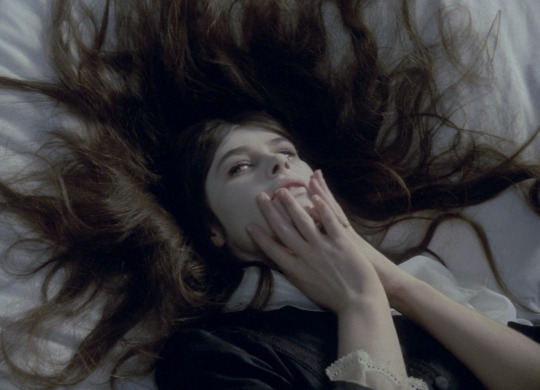
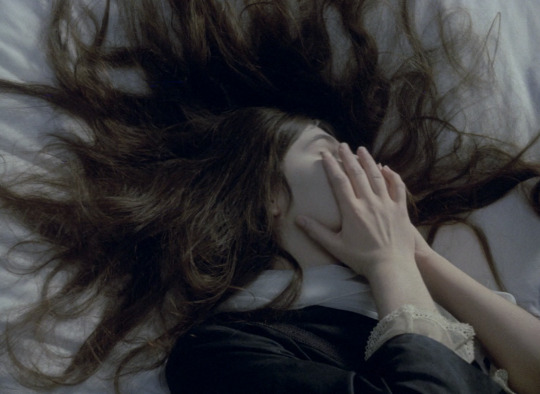
Valerie and Her Week of Wonders (1970)
dir. Jaromil Jireš
#valerie a týden divů#valerie and her week of wonders#jaromil jires#cinematography#jan curik#czechoslovakian cinema#alena stojakova#1970s
3K notes
·
View notes
Photo

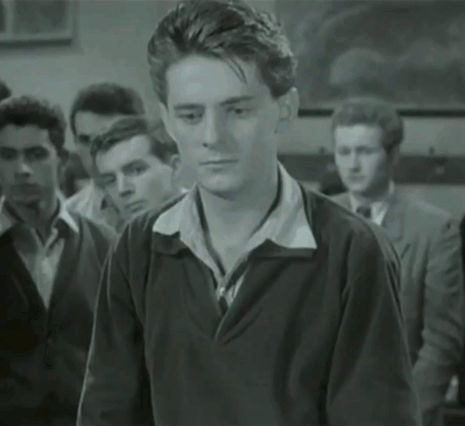
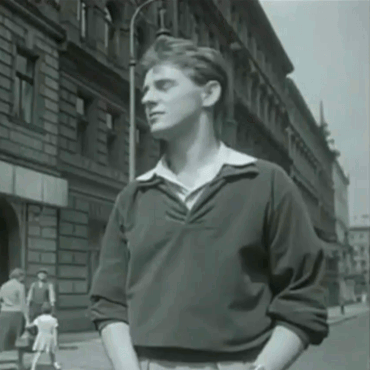
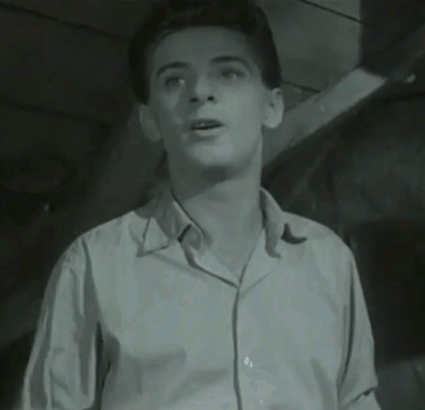



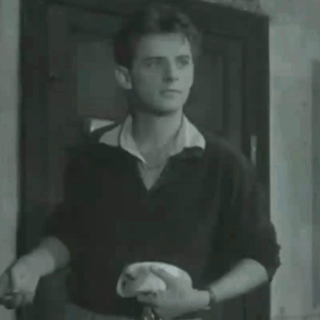


Ivan Mistrík as Pavel in Romeo, Julie a tma/Romeo, Juliet and Darkness (1958, dir. by Jiří Weiss)
#ivan mistrik#pavel#romeo and juliet#romeo juliet and darkness#romeo julie a tma#jiri weiss#jan otcenasek#czechoslovakia#czechoslovakian cinema#cinematography#cinema#czech cinema#czechoslovakian cinematography#czech new wave#1960s#1960#60s
6 notes
·
View notes
Photo



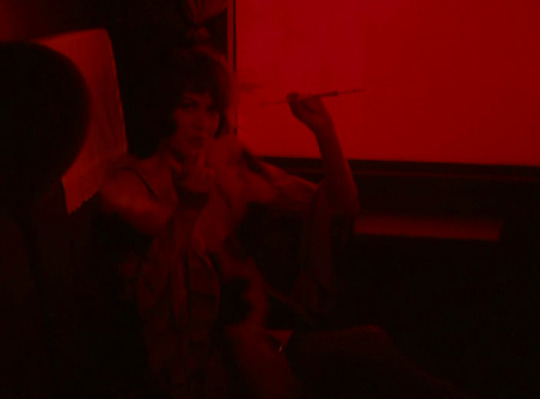
“they are not guilty. poor boys.”
shades of fern, 1986. dir. františek vláčil.
#František Vláčil#shades of fern#czech cinema#czechoslovakian cinema#czech#czechoslovakian#Stín kapradiny
9 notes
·
View notes
Text
400 Words on CAPRICIOUS SUMMER [1968] ★★★½
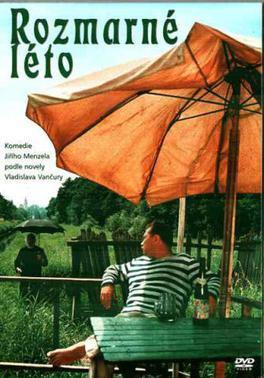
Sometimes a film doesn’t have to be ground-breaking or influential to be good. Sometimes, it’s enough to just be pleasant. And Jiří Menzel’s Capricious Summer is a very, very pleasant film. Vaguely set at some point in Interwar Czechoslovakia, the film largely takes place in a lakeside bathhouse in an idyllic countryside warm with the drowsiness of summer. Portly vacationers sun themselves on the dock in between sudden cloud bursts that drown half-drunk glasses of wine. Men float in the water, puffing at cigars as their wives playfully flirt with their friends. There’s liquor in the cups, sausage on the tables, and thoughtful conversation on the lips of everyone. Jirí Susi’s cinematography suggests delicate pastels as if everything, even the water and grass, has been gently bleached by the sun. It’s the kind of cinematic world you’d love to crawl into. And within this world Menzel weaves a wistful comedy of love and foolishness. The film follows the romantic fortunes of three friends: Antonín Dura (Rudolf Hrusínský), the grouchy owner of the bathhouse, ex-soldier Major Hugo (Vlastimil Brodský), and a priest named Roch (František Řehák). The three fall in love with Anna (Jana Drchalová), a dancer in a circus that’s come to town led by magician and tightrope walker Arnostek (Menzel). The film sees all three attempt to seduce the eager and willing Anna, yet fail at the very last moment. When the brutish Antonín corners her in his bathhouse, his demeanor melts into that of a nervous child, leaving him incapable of doing anything more than giving the dancer a foot massage. When the Major takes his turn at Anna’s circus, his seduction is suddenly interrupted when Antonín is rushed into their lodging after taking a terrible fall during his tightrope act. And when the hapless Roch tries to cozy up to her with a collection of Ovid’s love poetry, he gets attacked by a group of villagers. Eventually the frustrated Anna leaves the town in a huff. The film plays almost like a light-hearted prediction of Luis Buñuel’s That Obscure Object of Desire (1977), another comedy about sexual frustration, but lacking the Spaniard’s characteristic misanthropy. Capricious Summer is very obviously a bemused fantasy instead of a surrealist indictment of human nature—we never get the impression that we’re supposed to dislike the characters, even as they go behind each other’s backs or attempt adultery.
#★★★½#1968#Czechoslovakian Cinema#Capricious Summer#Film Reviews#Jiří Menzel#Rudolf Hrusínský#Vlastimil Brodský#František Řehák#Jana Drchalová
4 notes
·
View notes
Photo



Movie-log
020. Morgiana
Juraj Herz -- 1972 | Czechoslovakia | 6
9 notes
·
View notes
Text
❄ Here's a list of my favourite winter films that no one asked for (links lead to the full film or a trailer) ❄
Orlando, dir. Sally Potter (1992)
Three wishes for Cinderella, dir. Václav Vorlícek (1973)
Winter light, dir. Ingmar Bergman (1963)
Eternal sunshine of the spotless mind, dir. Michel Gondry (2004)
The documentary A very English winter: the Unthanks (2012)
Sir Arne's treasure, dir. Mauritz Stiller (1919)
Beauty and the beast, dir. Juraj Herz (1978)
The company of wolves, dir. Neil Jordan (1984)
Moonstruck, dir. Norman Jewison (1987)
#the ice-skating scene alone in 'orlando' for me makes it the most festive wintry film ever#czechoslovakian cinema though. SO beautiful. deserves more appreciation#winter#films#film recommendations#movie recommendations#movies#recommendations#dark academia#light academia#romantic academia#gradblr#my posts#bookblr#booklr#ingmar bergman#eternal sunshine of the spotless mind#the company of wolves#cinema#beauty and the beast#queued!
160 notes
·
View notes